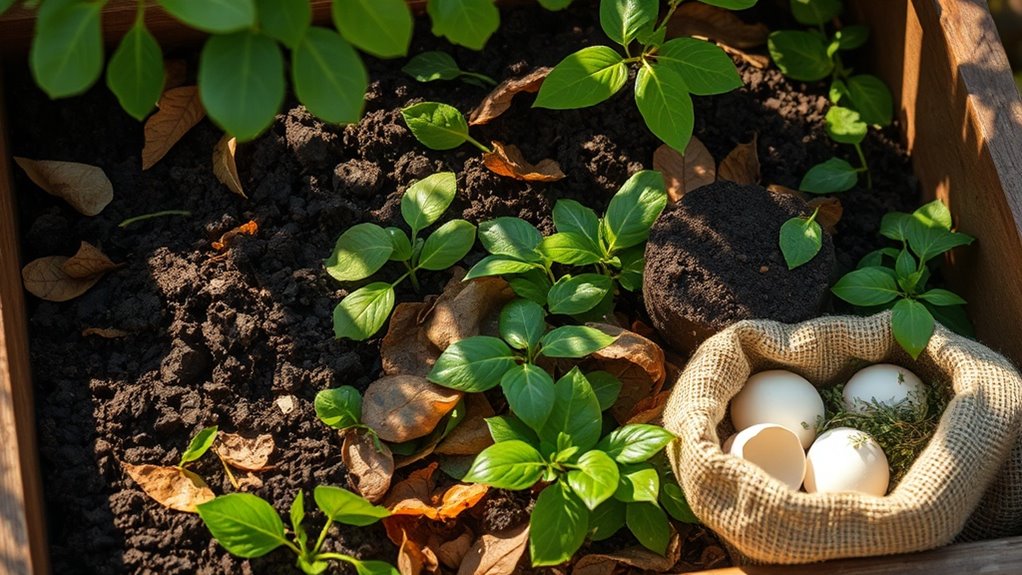The Ultimate Organic Fertilizer You Can Make at Home
Creating your own organic fertilizer at home is not only feasible but also highly effective for enriching your garden’s soil. By utilizing kitchen scraps, dry leaves, and grass clippings, you’ll harness essential nutrients such as nitrogen, phosphorus, and potassium. Understanding how to properly layer these materials and maintain appropriate moisture levels is key to promoting decomposition. But what specific steps should you follow to ensure optimal results?
Essential Ingredients for Homemade Organic Fertilizer
When creating homemade organic fertilizer, you’ll want to focus on three essential ingredients: nitrogen sources, phosphorus, and potassium.
Nitrogen promotes leaf growth, often sourced from kitchen scraps like vegetable peels or grass clippings.
Phosphorus supports root development, coming from bone meal or rock phosphate.
Potassium, found in wood ash or banana peels, enhances overall plant health, crucial for successful organic gardening. Additionally, using homemade organic fertilizers can lead to enhanced soil quality, improving nutrient retention and microbial activity.
Step-by-Step Guide to Making Your Organic Fertilizer
To create your own organic fertilizer, start by gathering the necessary materials and tools, ensuring you have a clear workspace.
You’ll need:
- Kitchen scraps (fruit and vegetable peels)
- Dry leaves or grass clippings
- A compost bin or container
Layer these materials strategically, monitoring moisture levels to encourage decomposition. Additionally, incorporating small-space solutions from composting can maximize your efforts even in limited areas.
Once ready, your homemade fertilizer will enrich soil and promote healthy plant growth.
Tips for Applying Your Organic Fertilizer Effectively
Applying your homemade organic fertilizer effectively can significantly enhance its benefits for your plants.
First, apply it during cooler parts of the day to prevent nutrient loss. Ensure even distribution to avoid over-fertilization in spots.
Water the area post-application to help nutrients penetrate the soil. Additionally, consider incorporating homemade organic pest control to further support your plants’ health while managing any pests naturally.
Lastly, observe plant responses and adjust frequency based on growth stages for optimal results.

